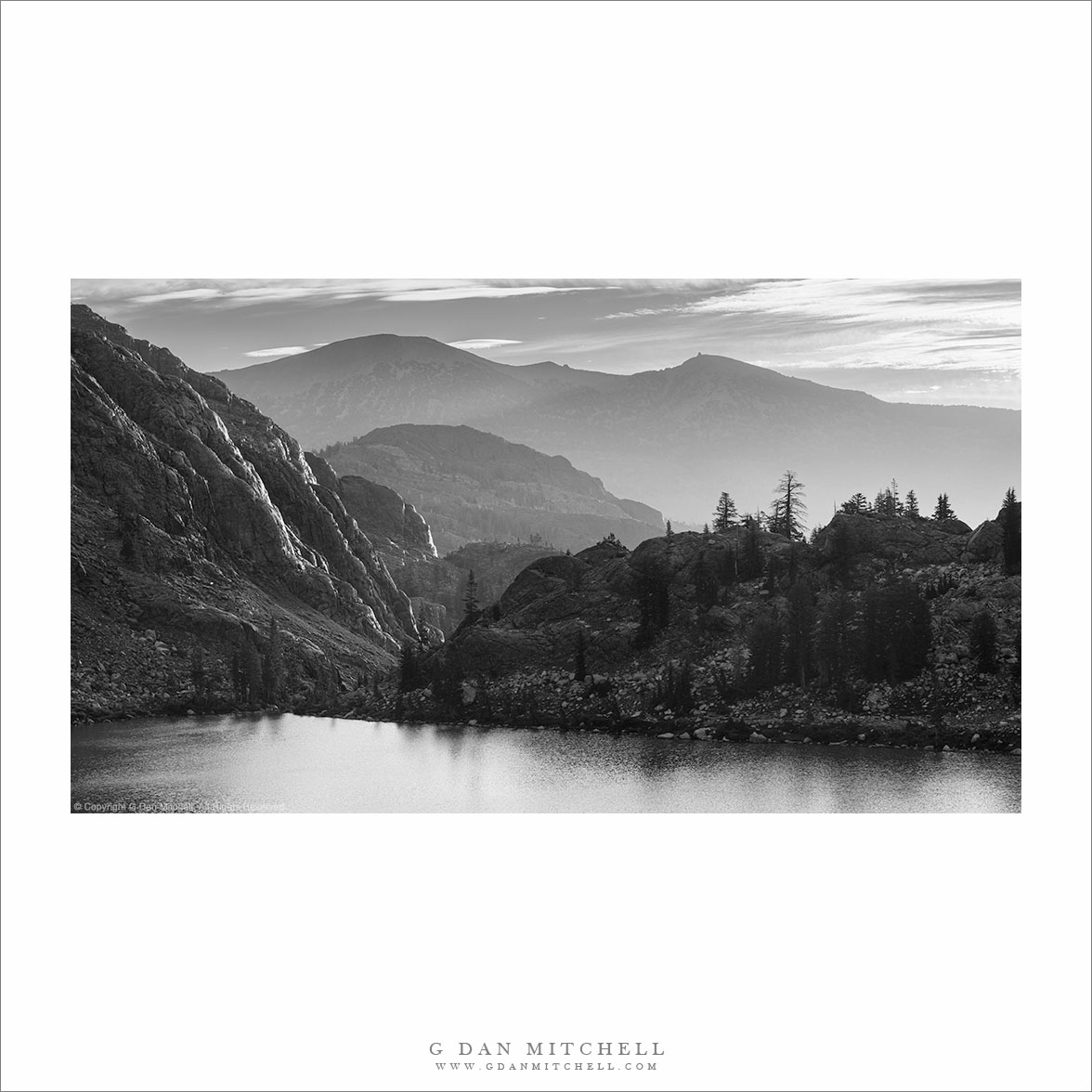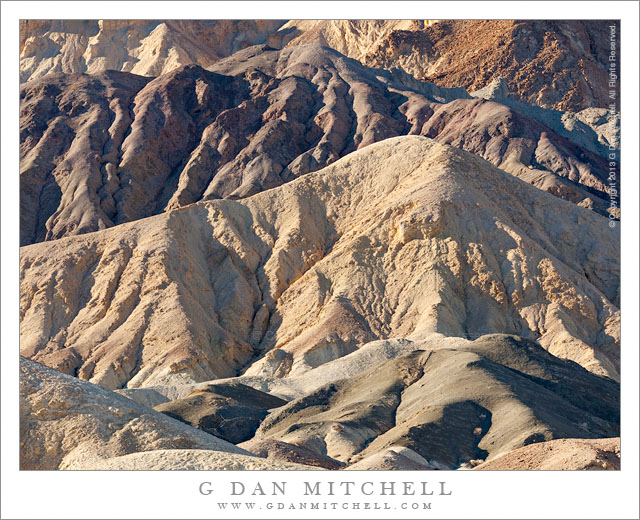
Because variations on this particular scene comprise a significant portion of the photographs I made during our August Sierra backcountry sojourn I have been trying to release them somewhat gradually. However, even though I shared a quite different version of the view from this camera position just a few days ago, here’s another. This one is, obviously, a near-panorama rendition that takes in the far edge of “our” little lake, its outlet, surrounding ridges, the more distant scene, and some beautiful morning clouds. The whole scene is softened by a bit of backlit morning haze.
Sometimes I’m immediately certain of what a photograph will look like as I make the exposure. But other times I’m less sure and I reserve judgment, perhaps making multiple exposures that will work for any of several possible directions I might take with the subject. That was the case with this scene — multiple “takes” were required not only for that reason but also to ensure that I’d be able to work with some rather extreme light contrasts between the shadowed foreground and the very bright clouds and sky.
G Dan Mitchell is a California photographer and visual opportunist. His book, “California’s Fall Color: A Photographer’s Guide to Autumn in the Sierra” (Heyday Books) is available directly from him.
G Dan Mitchell: Blog | Bluesky | Mastodon | Substack Notes | Flickr | Email
All media © Copyright G Dan Mitchell and others as indicated. Any use requires advance permission from G Dan Mitchell.


